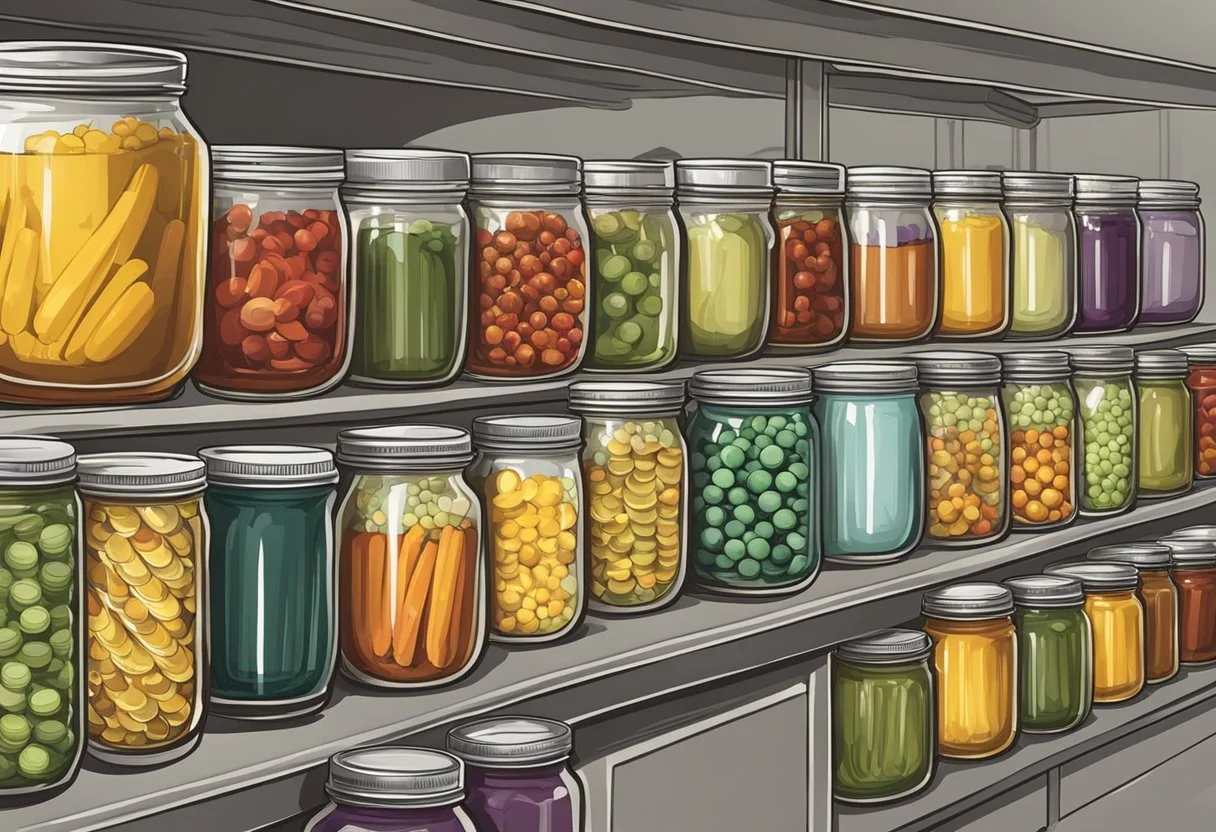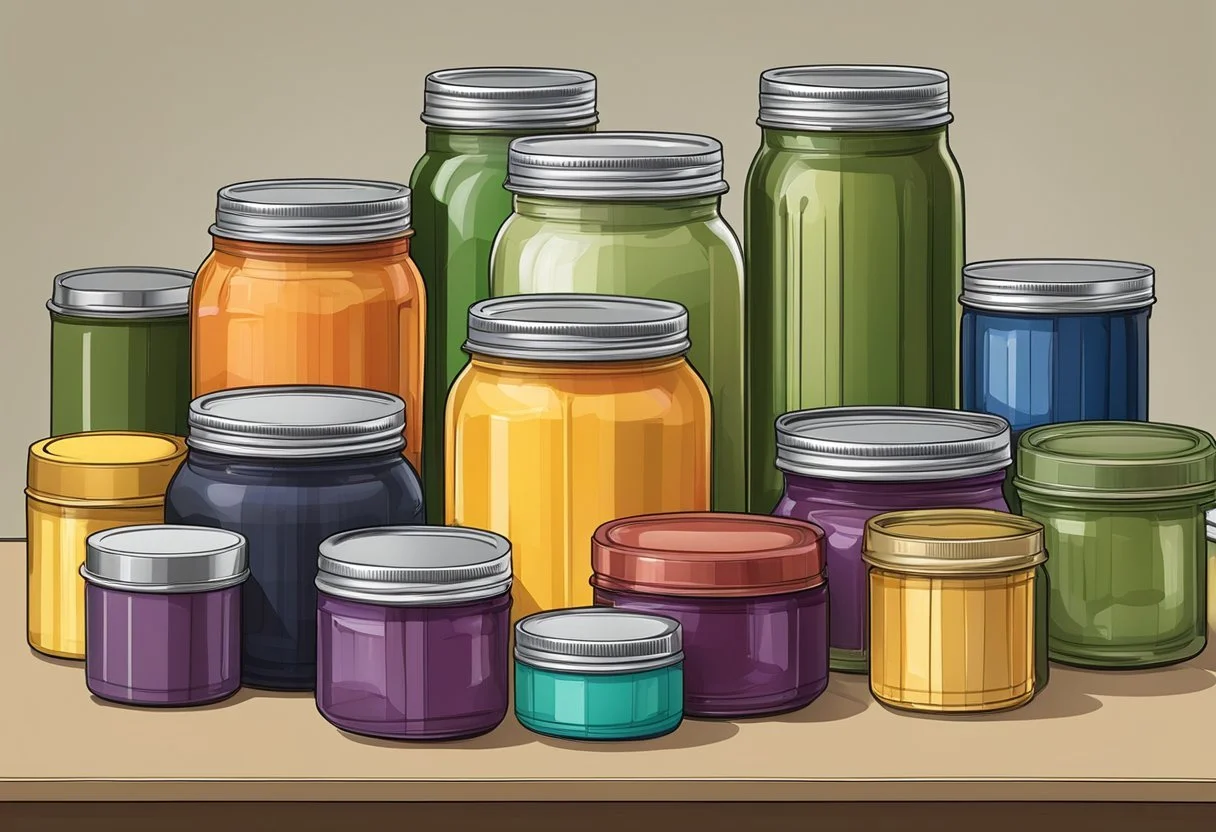Canning Lids for Home Canning
Essential Tips and Trusted Recommendations
Discover > Canning > Canning Lids for Home Canning
Canning is a popular method for preserving and storing food at home, ensuring both its freshness and shelf life. One essential component in the canning process is the canning lid, which helps create a vacuum seal, playing a crucial role in keeping the contents safe and preventing spoilage. In this article, we will explore different types of canning lids, their functionality, and what you need to consider when choosing the right lid for your home canning needs.
There are various types of canning lids available for home canners, such as two-piece lids with a separate band and lid, one-piece lids, and reusable canning lids. Two-piece lids are perhaps the most common, consisting of a flat metal lid with a sealing compound on the rim, and a metal screw band that holds the lid in place during the canning process. The sealing compound on the lid is essential in creating a vacuum seal that helps preserve food.
On the other hand, one-piece lids are generally used on commercially-purchased goods and not recommended for home canning in North America. Reusable canning lids, made from food-grade materials, are a more environmentally-friendly alternative to disposable lids and are safe for use with both water bath or pressure canning methods.
Fundamentals of Canning
Canning Methodology
Canning is a valuable method for preserving fruits, vegetables, and other perishable foods. There are two primary canning methods: pressure canning and water bath canning. Pressure canning is ideal for preserving low-acid foods, such as meats and non-acidic vegetables. In this process, the canning jars are placed within a pressure canner, which uses steam to create a high-pressure environment and efficiently destroy harmful microorganisms. Water bath canning, on the other hand, is well-suited for preserving high-acid foods, such as fruits and acidic vegetables. Jars are submerged in boiling water to adequately heat the contents and eliminate microorganisms that could spoil the food.
Canning Lids Basics
Canning lids play a crucial role in home canning, as they seal the jars and prevent contaminants from entering. A common type of canning lid is the two-piece lid, which consists of a flat metal disc and a screw band. The metal disc, also called the flat lid, has a sealing compound around its edge that softens when heated, creating an airtight seal as the jar cools. These lids come in two sizes: wide mouth and regular mouth to accommodate different jar sizes.
There are alternative options to the traditional metal two-piece lids, such as reusable canning lids, which usually consist of a plastic or silicone seal and a screw band. Brands like Weck also offer specific glass lids for their Weck jars, using a rubber seal and metal clamps to keep the lid in place during processing.
Canning Jars
Selecting the right canning jar is essential for a successful and safe canning process. Some popular brands of canning jars include Mason jars, Kilner, and Le Parfait. These jars come in a variety of sizes and mouth widths, making them suitable for different types of foods and canning methods. It's crucial to use jars specifically designed for canning to ensure a reliable seal and prevent breakage during the canning process.
Additionally, some people opt for vintage jars for their aesthetic appeal, but they may not always be suitable for modern canning methods. It is essential to inspect vintage jars for any defects, such as cracks or chips, and ensure that they can accommodate modern canning lids to create a proper airtight seal during the canning process.
Advanced Canning Theory
Understanding Vacuum Seal
The vacuum seal is a critical component in home canning, ensuring an airtight seal that preserves the contents of the jar. When a jar is properly sealed, air is expelled from the jar, creating a vacuum that prevents spoilage and contamination. As the jar cools, the vacuum seal is formed, and the lid is pulled down onto the jar rim, creating the airtight seal. A sign of a successful vacuum seal is the popping sound of the lid as it is pulled down.
Headspace and Sealing Procedure
Headspace is the space between the top of the food contents in the jar and the jar lid. Proper headspace is essential for successful vacuum sealing and preserving food quality. It allows for the expansion of food as it is heated during the canning process and ensures a strong vacuum seal. The USDA Complete Guide recommends specific headspace for different types of foods.
To achieve an airtight seal, jars should be filled with the recommended headspace and then wiped clean to remove any food residue on the jar rim. Lids should be placed on the jars using a magnetic lid wand to avoid contamination. Screw bands should be tightened "finger-tip tight" - just tight enough to hold the lid in place during the canning process without over-tightening. Over-tightening may lead to buckling of the lid or insufficient venting of air during processing, which could compromise the vacuum seal.
Food Safety in Home Canning
Proper food safety in home canning is essential to avoid spoilage and the risk of foodborne illnesses. Using tested recipes and directions from reputable sources, such as the National Center for Home Food Preservation, the University of Minnesota, or Healthy Canning, reduces the risk of improper canning techniques.
High-acid foods are less susceptible to bacterial growth and spoilage, but low-acid foods must be processed using a pressure canner to ensure a safe preserving environment. Always follow the guidelines from the USDA Complete Guide or other trusted sources to ensure a safe home canning experience.
In conclusion, understanding the vacuum seal, proper headspace and sealing procedures, and adhering to food safety guidelines are crucial to achieving successful home canning results.
Canning Brands and Suppliers
This article explores the various canning brands and suppliers across North America, Australia, and New Zealand, providing you with an informed selection when it comes to purchasing canning lids for home use.
International Brands
The Ball, Kerr, Bernardin, and Golden Harvest brands are popular choices for canning lids in multiple regions, including North America, Australia, and New Zealand. These manufacturers are known for their high-quality materials and reliable sealing properties, which are essential when preserving food.
Ball and Kerr are both owned by Newell Brands, which ensures consistency in their products. These brands offer a wide range of canning supplies, including lids, jars, and other accessories.
Bernardin caters primarily to the Canadian market and offers a variety of canning lids and jars suitable for different types of home preservation.
Golden Harvest is another popular brand that provides canning lids in varying sizes, compatible with different types of jars.
Local Suppliers
When purchasing canning lids, it's important to consider local suppliers who offer the necessary items for home canning, such as general retail and specialty stores:
Ace Hardware: A prominent supplier in North America, Ace Hardware offers a selection of canning lids and supplies from popular brands like Ball, Kerr, and Golden Harvest.
Local retailers in Australia and New Zealand: To find the most suitable canning lid options, many people turn to local retailers in their region for products from Ball, Kerr, or other brands that cater to these market requirements.
In conclusion, a variety of canning lid options are available worldwide through international brands and local suppliers. Always consider your unique preservation needs and local resources when selecting the right canning lid for your home projects.
Home Gardening and Canning
Preserving Garden Produce
Home gardening provides an abundance of fresh produce during canning season. To extend the life of garden-harvested fruits and vegetables, preservation methods like canning are essential. Canning, particularly the use of canning lids, plays a crucial role in maintaining the quality and safety of home canned food.
High-acid foods, such as pickles, are suitable for preservation using the boiling water canner method. This process involves a few necessary items, including:
Jars with two-piece canning lids (the flat lid and the screw band)
Boiling water canner
Basic canning utensils
Carefully follow the recipe's instructions, ensuring the jars are clean and the acid levels are appropriate. The use of canning lids helps maintain an airtight seal, keeping the food sterile after the jars have been processed.
Note: Regular canning lids are designed for single-use canning to maintain optimal seal quality.
Pickle and Fruit Canning
For pickle canning, start by selecting fresh, firm produce and a reliable recipe. The typical ingredients involved in making pickles include:
Fresh cucumbers or other vegetables/fruits suited for pickling
Vinegar, usually with a 5% acidity level
Salt, sugar, or other pickling spices (how long does pickling spice last?), depending on the recipe
Fruit canning typically involves preserving high-acid fruits, such as apples, pears, or plums. The preservation methods for fruit canning include:
Water bath canning: Suitable for high-acid fruits, jams, jellies, and preserves. The fruit is processed in a boiling water canner.
Pressure canning: Ideal for low-acid fruits and vegetables, meats, and poultry. This method uses a pressure canner to achieve higher temperatures, ensuring proper sterilization.
When canning fruits, it's essential to follow the recipe's guidelines for sugar content and recommended processing times. Proper usage of canning lids, such as washing them in hot, soapy water, is crucial for achieving a successful and safe seal.
Practical Tips for Can Canning
Avoiding Seal Failures
Seal failures can lead to spoiled canned goods and wasted effort. To avoid seal failures, follow these practical steps:
Inspect your jars and lids: Ensure that there are no cracks or chips in the jars and that the canning jar lids have unused, undamaged rubber gaskets.
Sterilize jars when necessary: If the processing time is less than 10 minutes, sterilize the jars beforehand to ensure a clean environment for your preserved food.
Follow manufacturer instructions: Always adhere to the canning lid manufacturer's guidelines for tightening and sealing the lids properly.
Not too tight, not too loose: Tighten the lids to just fingertip tight, allowing air to escape during processing. Over-tightening can lead to buckled lids and an improper seal.
Reusable Vs One-Time Use Lids
When it comes to canning, there are two main types of lids: reusable lids and non-reusable or one-time use lids. Both have their own benefits and drawbacks.
Reusable Lids
Pros: Reusable canning jar lids are cost-effective over time as they can be used repeatedly. They often come with rubber gaskets that can be replaced as needed.
Cons: The initial investment for reusable lids may be higher than one-time use lids. They also require careful handling and storage to ensure a long lifespan.
One-Time Use Lids
Pros: Non-reusable lids are generally less expensive upfront and easily accessible. They can be found at most grocery stores.
Cons: These lids can only be used once, meaning that they must be replaced every time. This can generate more waste and potentially increased long-term costs for avid home canners.
Comparing reusable and one-time use lids, it is essential to consider factors such as cost, accessibility, and waste production to determine the most suitable option for your home canning needs. By following proper care and usage guidelines, you can maintain an efficient, satisfying home-canning experience.





